Safeguarding Rural Lives:
Fixing Service and Policy Gaps in Emergency Medical Device Access
This project was one of eight concurrent workstreams within a broader client engagement. The client approached us with an open-ended challenge, asking us to identify critical pain points within their service ecosystem. Our role was to lead the research, surface the most pressing issues, and develop actionable solutions.
We were also responsible for educating the client team on the design process and design thinking methodology. Every step had to be clearly documented and archived for potential future government use or audits.
Through our work, we successfully identified major service gaps affecting 100 million DME (Durable Medical Equipment) claims, which impacted 12 million beneficiaries and indirectly influenced access for 66.3 million Americans living in rural areas.
Team Members:
2 Design Strategists - 1 Policy Adviser - 1 Lawyer - 1 Data Scientist - 1 Graphic Designer
Methods & Activities
-
User Interview
-
User Research
-
Service Design
-
Design Thinking Workshop
-
Data Visualization
-
Policy Advice
-
User Journey Mapping
-
Service Blueprints
My responsibilities
-
Planned and scoped research activities
-
Conducted user interviews
-
Synthesized and analyzed data
-
Formed an ad-hoc team to visualize patterns
-
Led brainstorming sessions for communication artifacts
-
Created service blueprints and journey maps
-
Facilitated design thinking workshops
Project Success Highlights
Reducing project length by 12%
Through early SME engagement we reduced the project length by 4 weeks for 6 teams, and boosting ROI by $240K via workforce optimization.
White House Debriefing
Research findings were presented during a White House debriefing, spotlighting user pain points across the service journey.
Policy insights that impacted 12M lives
Identified 48 themes, 9 key insights, and proposed 25 policy recommendations for new services to support 12M beneficiaries.
Secured Renewal Through Visual Storytelling
Secured contract renewal by turning insights into visuals, summarizing
findings from 108 interviews and 12k responses.

66.3 million rural Americans face critical gaps in access to life-sustaining medical equipment during public health emergencies.
The Process and the Outcome
Refining the Project Scope
We interviewed 12 experts, analyzed the insights, and created three proposals. All topics were important, but we guided the client to focus on the one most urgent today: how public health emergencies, like COVID-19 and climate-related disasters, affect access to essential services and medical devices for beneficiaries.
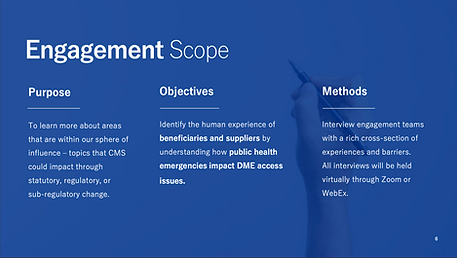
Optimizing the Project Timeline
We evaluated the prior engagement in the same contract, and involved subject matter experts early in the development of the research protocols. This approach saved four weeks across six workstreams and generated $240,000 in ROI by accelerating alignment and optimizing team deployment.
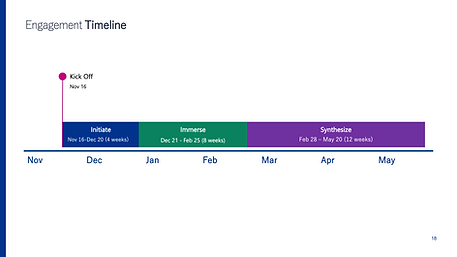
ٍProject Summary Report Sheet
As shown in the slide, we interviewed 108 participants and used AI to collect verbatim quotes, resulting in 1,250 data points, which we synthesized into 56 themes, 14 key insights, and 6 opportunity areas for service improvement.
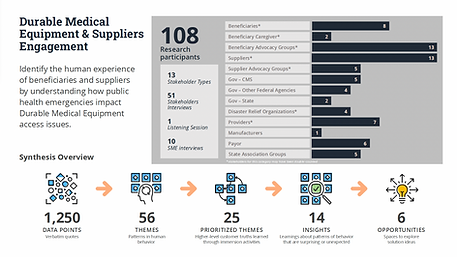

Contributed to White House Debrief Highlighting Critical User Pain Points Across the Service Journey
Project Deliverables
Challenging the Norm: Behavior-Based Personas Over Role-Based
I realized that technology adoption in this space was driven more by behavioral patterns than by user roles, which challenged the industry’s typical persona model. As a result, we developed six behavior-based personas and created tailored communication materials aligned to each behavior type. This approach helped uncover and remove key user barriers, leading to an 86% increase in trust and an 89% boost in adoption of the service platform.
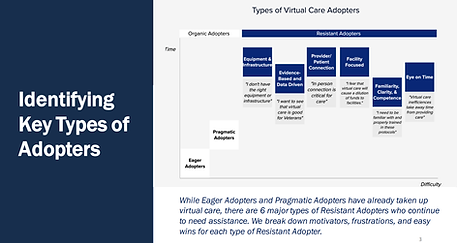.png)
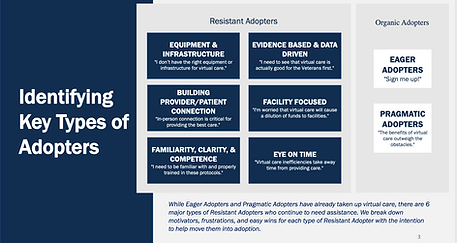.png)
Mapping the Stakeholder Journey Through Crisis
We analyzed over 1,250 data points and created a unique journey map grounded in in-depth interviews. We validated the customer journey with stakeholders to confirm the accuracy of the data and insights before finalizing it. (visuals were shared without data to comply with NDA requirements)

Simplified Journey Maps for Impactful Stakeholder Conversations
To support our workshops, we also developed simplified versions tailored to the key points we needed to share. These versions were designed to be clear and informative—detailed enough to educate stakeholders on specific issues without overwhelming them. (visuals were shared without data to comply with NDA requirements)

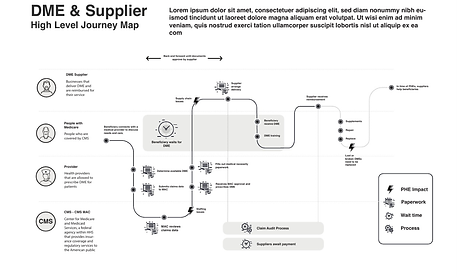
The Other Side of Success: Unintended Consequences in Rural Communities
CMS successfully reduced fraud and claims, but our research revealed unintended consequences. The policies, while effective on paper, put lives at risk, especially in rural areas during public health emergencies. This underscored the need for a holistic view of policy impacts, even when outcomes appear successful.
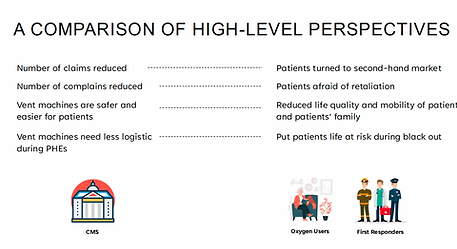
Securing a Contract Renewal Through Insight-Driven Visual Strategy
Proactively proposed and built an ad-hoc team after recognizing the need for strategic visual communication to strengthen our client engagement. Led the team in transforming insights into compelling visual artifacts. These materials clarified key themes, aligned stakeholders, and played a pivotal role in securing a contract renewal. The work not only reinforced client trust but also set the stage for future collaboration by demonstrating the value of design-led insight translation.
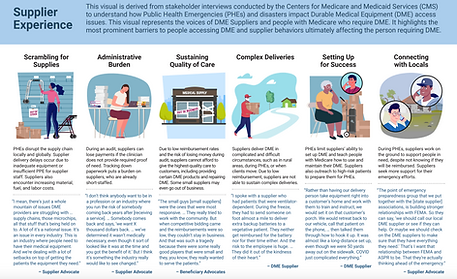.png)
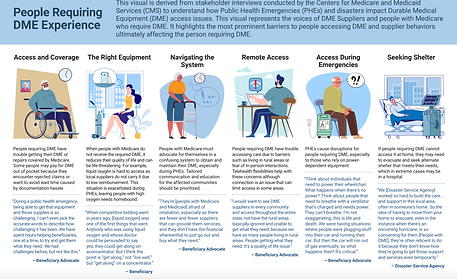.png)
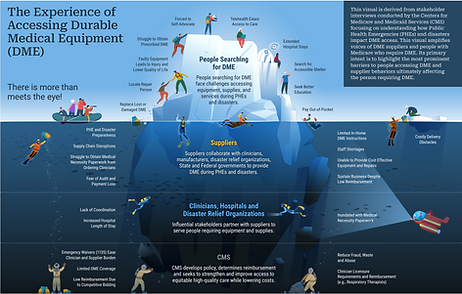.png)
Turning Insights into Actionable Policy
We distilled findings from 108 interviews and over 12K responses into a final report that identified 48 themes and 9 key insights. From this foundation, we developed 25 actionable policy and service recommendations to better support 12M beneficiaries.
